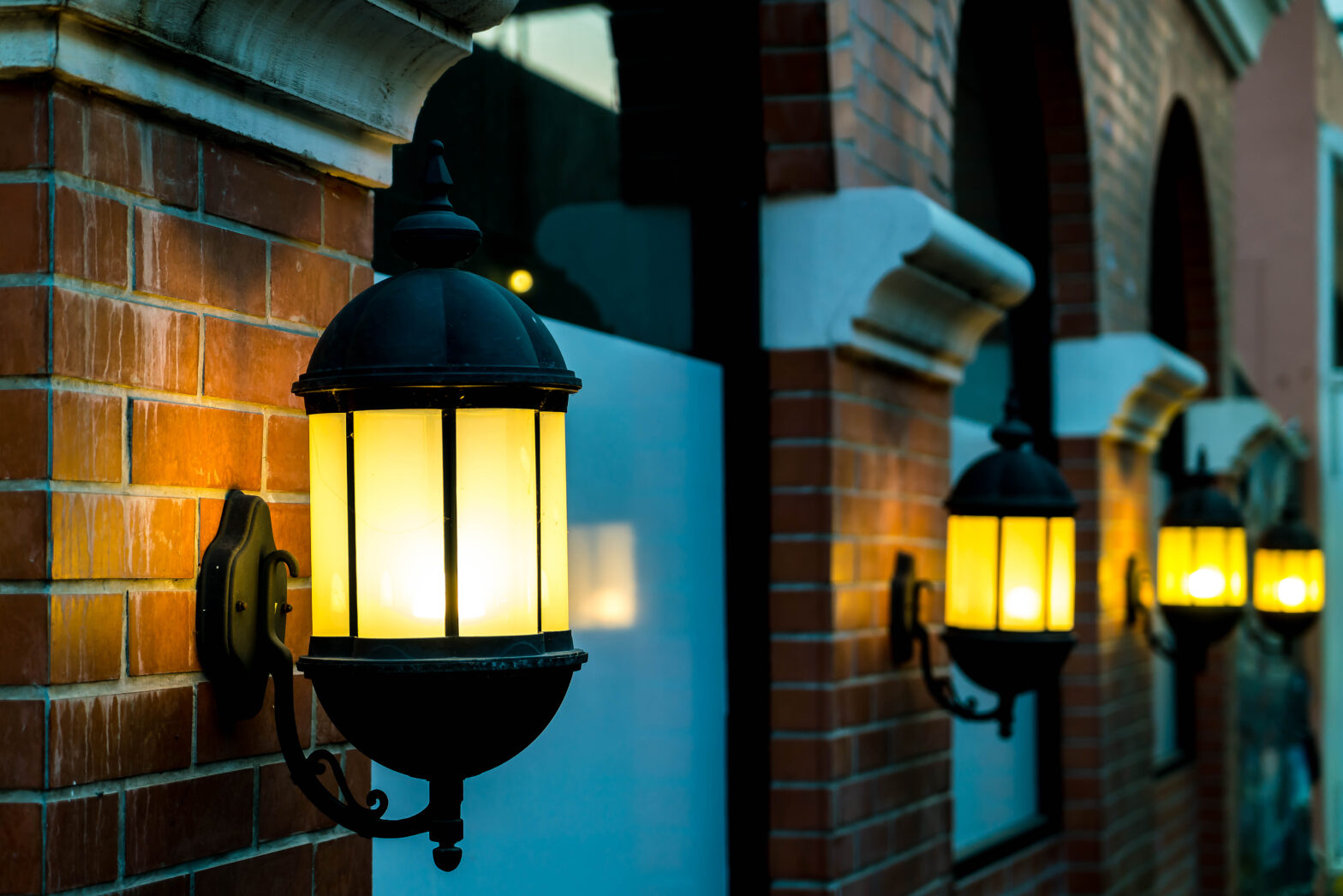Introduction
Nowadays, external lighting has become crucial for urban landscapes. Whether it’s an office building or a prestigious hotel, you will often encounter the architecture being highlighted with different types of light arrangements.
This is what we call façade lighting. The technique is mainly used to accentuate and illuminate the architectural grandeur and highlights in a brand way. Also, it plays a crucial role in enhancing security and improving night visibility. Owing to all these aspects, knowing what is facade lighting and its benefits is crucial. That being said, we have compiled an inclusive guide explaining the techniques involved with façade lighting, its advantages, and the industry-proven practices to achieve optimal success.
What is facade lighting?
Most people often wonder what facade lighting is and, therefore, doubt its significance. If we say that it is the key to highlighting every single aspect of a building’s architecture and structural dimension, you will be in a dilemma. So, let us clarify what exactly this lighting technique is.
You can see different architectures highlighted with multi-coloured lights, whether it’s a historic landmark or a high-end commercial building. This is what we call façade lighting. When external light sources are added at prime locations, they create striking illumination, accentuating the intricate detailing, curves, lines, and other design parameters.
Once the features are highlighted using various facade lighting design techniques, a dynamic and stunning visual will be created. It can help attract the attention of the onlookers and accentuate the building’s overall appearance. Below are the key factors that can either make or break the after-effects of the exterior façade lights.
Building type
Different types of buildings and architectures have varied luminance ranges. For example:
- Residential buildings: 5 to 15 footcandles. C
- Commercial structures: 20 to 50 footcandles.
- Monuments: 10 to 30 footcandles.
So, it’s crucial to ensure that the illumination from facade lighting does not exceed this range. If it does, it may cause overexposure and intense glares.
Colour temperature
Another crucial factor for facade lighting techniques is the colour temperature. For instance, using warm white light shades with a tinge of yellow can make the surroundings look cosier for the onlookers. So, professionals pay extra attention to this attribute. After all, the right temperature can create the desired visual impact and set the right mood for the onlookers.
Strategic light placement
Placing the lights at random locations is never the trick. Instead, they should be positioned strategically on different architectures. Only then can glares and unnecessary exposure be avoided. You can refer to different placement ideas, like:
- Downlighting
- Uplighting
- Floodlighting
- Side lighting.
Sustainability
Eco-friendly LEDs and smart control systems are best known for offering sustainable lighting solutions. Using them in façade lighting can greatly minimize environmental impacts.
Importance of facade lighting
Knowing what facade lighting is and its significance will help clarify most of the doubts and give you a clear idea about its growing popularity. Having said that, we have
- Façade lighting techniques can highlight the building’s texture, intricate design patterns, and architectural elements. The overall appearance will be accentuated further, provided the positioning is correct.
- Thanks to the bright illumination, nighttime visibility is increased by several notches. This can help prevent accidents, especially near large commercial buildings, monuments, and residences.
- Custom façade lighting ideas help commercial brands to promote themselves. For example, unique signage and lighting designs can attract buyers and customers to retail stores easily.
- It is often used to improve a building’s overall security by illuminating nearby areas, especially blind spots. Also, unauthorized access to the buildings can be deterred with this lighting technique.
- Sometimes, façade lighting techniques are used to highlight important social and cultural events. For instance, monuments are beautifully decked up with multi-coloured lights on national holidays. Commercial buildings are also decorated on special occasions, like business events.
Types of facade lighting
You will come across different types of façade lighting techniques while researching. If you don’t know their purpose, the chances of making a wrong choice will be high. This way, you can never add the desired visual appeal to the building’s structure. So, it’s essential to know these in detail beforehand. At least then, you can choose the right type and proceed with the plan accordingly.
Direct lighting
As the name implies, this technique refers to the positioning of the light fixtures right above the building’s façade. Spotlights and media façade are the two best examples of direct lighting.
Wash lighting
This technique accentuates the flat façade of any building by using a wider light beam. Uniform light beams can also better illuminate larger wall textures.
Wall grazing
If you want to create a fascinating visual effect, wall grazing is one of the best facade lighting design techniques. As the name sounds, the illumination will be highest at the single position and then continue to fade out as you move. To achieve this effect, adjust the light fixtures so that they can be close to the bottom of the façade. This will help in increasing the illumination at the base. However, as you move upwards, the brightness will gradually fade. So, the architectural complexities and textured details of the walls of any building will be highlighted perfectly.
Accentuating
The accentuating technique is often used to highlight specific architectural details or structures of the building. For instance, direct light beams can shift the focus on vegetation, arcades, entrances, and other objects that require emphasis.
Facade lighting design techniques
Uplighting
Uplighting is one of the most popular facade lighting design techniques used for buildings of various shapes and sizes. Place light fixtures right at the bottom of the structure. Once illuminated, the light beams will graze the external walls, accentuating the details properly. Additionally, this arrangement will add more depth to the overall structural dimension. However, for tall buildings like monuments, light fixtures have to be placed at intermediate levels. This way, the beams will reach high enough to illuminate the top floors and the roof.
Downlighting
Downlighting is just the opposite of the uplighting technique. In other words, the light fixtures need to be positioned downwards at an angle. This will help minimize glares and shadows. However, if the fixtures are not positioned correctly, it can flatten the textural details. Like uplighting, downlighting also requires the addition of lights at intermediate levels for taller buildings. Optics and diffusers can be used to spread the illumination uniformly across the buildings.
Accent lighting
One of the most complicated facade lighting techniques is accent lighting. Here, you can combine the goodness of both the accent lights and the general wash lighting techniques. If done correctly, the light beams will highlight specific features of the building, like the entrance, arcade, pillars, and others. However, you have to ensure that weatherproof lighting fixtures are used for fountains, ponds, and small water bodies.
Design considerations for facade lighting
Now that facade lighting has been clarified in detail, let’s have a quick look at the factors to be considered for the design.
Choosing the right light source
The illumination and its visual effect greatly depend on the compatibility of the light source. For instance, let’s assume the lights you have chosen have an illuminance greater than the recommended range for the building type. If you continue with these, avoiding glares and overexposure will become extremely difficult. Similarly, if weatherproofing light sources are not chosen for illuminating water bodies, the risks of damage will increase tenfold.
Placement & angle optimization
The illumination will vary depending on the angle and placement of the light fixtures. For instance, keeping the light fixtures straightly aligned in downlighting will create more shadows and flatten the textured details. Hence, you should know the right placement angle. This way, optimizing the brightness will be hassle-free. Besides, you can easily achieve the desired visual effect.
Smart & sustainable lighting controls
It’s crucial to invest in sustainable lighting solutions to illuminate a building’s external details. For example, you can choose from LED-powered lights and intelligent control systems. Their energy consumption is relatively low compared to conventional lamps and tube lights, making brands compliant with energy regulations and standards.
Conclusion
In this article, we have discussed facade lighting, its types, benefits, and the design techniques popular in the market. Based on the illustration, you now need to select the best design process based on the structural detail you would like to highlight. Also, consider the factors we have explained that can impact the visual effect created through the façade lighting design. To explore innovative lighting solutions and expert guidance, visit AJV Tech for industry-leading insights and services tailored to your project needs.
FAQs
Can facade lighting be changed seasonally?
You may have to decorate the same building in different ways depending on the occasion. That’s why you should invest in a facade lighting setup that can be changed seasonally. Get an expert’s advice on the same before proceeding.
How long can LED facade lighting last?
Thanks to their long lifespan, LED lights can last several years. Using them in façade lighting will ensure you won’t have to replace them soon.
What’s the difference between architectural and facade lighting?
Professionals use façade lighting to illuminate the external architecture and details of any building. On the other hand, architectural LED lighting highlights special features of both the interior and exterior of any architecture.
Are there regulations for outdoor facade lighting?
Outdoor facade lighting should follow regulations regarding overexposure, glares, shadows, and other factors so that visibility is not hindered.

